-
EXECUTIVE SUMMARY
-
Market Overview
-
Key Findings
-
Market Segmentation
-
Competitive Landscape
-
Challenges and Opportunities
-
Future Outlook
-
MARKET INTRODUCTION
-
Definition
-
Scope of the study
-
Research Objective
-
Assumption
-
Limitations
-
RESEARCH METHODOLOGY
-
Overview
-
Data Mining
-
Secondary Research
-
Primary Research
-
Primary Interviews and Information Gathering Process
-
Breakdown of Primary Respondents
-
Forecasting Model
-
Market Size Estimation
-
Bottom-Up Approach
-
Top-Down Approach
-
Data Triangulation
-
Validation
-
MARKET DYNAMICS
-
Overview
-
Drivers
-
Restraints
-
Opportunities
-
MARKET FACTOR ANALYSIS
-
Value chain Analysis
-
Porter's Five Forces Analysis
-
Bargaining Power of Suppliers
-
Bargaining Power of Buyers
-
Threat of New Entrants
-
Threat of Substitutes
-
Intensity of Rivalry
-
COVID-19 Impact Analysis
-
Market Impact Analysis
-
Regional Impact
-
Opportunity and Threat Analysis
-
Endoscopy Device Market, BY Product Type (USD Billion)
-
Flexible Endoscopes
-
Rigid Endoscopes
-
Hybrid Endoscopes
-
Endoscopy Visualization Systems
-
Endoscopy Device Market, BY Application (USD Billion)
-
Gastroenterology
-
Pulmonology
-
Urology
-
Gynecology
-
Orthopedics
-
Endoscopy Device Market, BY End User (USD Billion)
-
Hospitals
-
Specialty Clinics
-
Ambulatory Surgical Centers
-
Endoscopy Device Market, BY Component (USD Billion)
-
Instruments Accessories
-
Visualization System
-
Endoscope
-
Endoscopy Device Market, BY Regional (USD Billion)
-
North America
-
US
-
Canada
-
Europe
-
Germany
-
UK
-
France
-
Russia
-
Italy
-
Spain
-
Rest of Europe
-
APAC
-
China
-
India
-
Japan
-
South Korea
-
Malaysia
-
Thailand
-
Indonesia
-
Rest of APAC
-
South America
-
Brazil
-
Mexico
-
Argentina
-
Rest of South America
-
MEA
-
GCC Countries
-
South Africa
-
Rest of MEA
-
Competitive Landscape
-
Overview
-
Competitive Analysis
-
Market share Analysis
-
Major Growth Strategy in the Endoscopy Device Market
-
Competitive Benchmarking
-
Leading Players in Terms of Number of Developments in the Endoscopy Device Market
-
Key developments and growth strategies
-
New Product Launch/Service Deployment
-
Merger Acquisitions
-
Joint Ventures
-
Major Players Financial Matrix
-
Sales and Operating Income
-
Major Players RD Expenditure. 2023
-
Company Profiles
-
Smith and Nephew
-
Financial Overview
-
Products Offered
-
Key Developments
-
SWOT Analysis
-
Key Strategies
-
Fujifilm
-
Financial Overview
-
Products Offered
-
Key Developments
-
SWOT Analysis
-
Key Strategies
-
Hoya Corporation
-
Financial Overview
-
Products Offered
-
Key Developments
-
SWOT Analysis
-
Key Strategies
-
Johnson and Johnson
-
Financial Overview
-
Products Offered
-
Key Developments
-
SWOT Analysis
-
Key Strategies
-
Stryker
-
Financial Overview
-
Products Offered
-
Key Developments
-
SWOT Analysis
-
Key Strategies
-
Karl Storz
-
Financial Overview
-
Products Offered
-
Key Developments
-
SWOT Analysis
-
Key Strategies
-
Richard Wolf
-
Financial Overview
-
Products Offered
-
Key Developments
-
SWOT Analysis
-
Key Strategies
-
Medtronic
-
Financial Overview
-
Products Offered
-
Key Developments
-
SWOT Analysis
-
Key Strategies
-
Conmed
-
Financial Overview
-
Products Offered
-
Key Developments
-
SWOT Analysis
-
Key Strategies
-
EndoChoice
-
Financial Overview
-
Products Offered
-
Key Developments
-
SWOT Analysis
-
Key Strategies
-
Olympus
-
Financial Overview
-
Products Offered
-
Key Developments
-
SWOT Analysis
-
Key Strategies
-
Pentax Medical
-
Financial Overview
-
Products Offered
-
Key Developments
-
SWOT Analysis
-
Key Strategies
-
Ambu
-
Financial Overview
-
Products Offered
-
Key Developments
-
SWOT Analysis
-
Key Strategies
-
Boston Scientific
-
Financial Overview
-
Products Offered
-
Key Developments
-
SWOT Analysis
-
Key Strategies
-
Appendix
-
References
-
Related Reports
-
LIST Of tables
-
LIST OF ASSUMPTIONS
-
North America Endoscopy Device Market SIZE ESTIMATES & FORECAST, BY PRODUCT TYPE, 2019-2035 (USD Billions)
-
North America Endoscopy Device Market SIZE ESTIMATES & FORECAST, BY APPLICATION, 2019-2035 (USD Billions)
-
North America Endoscopy Device Market SIZE ESTIMATES & FORECAST, BY END USER, 2019-2035 (USD Billions)
-
North America Endoscopy Device Market SIZE ESTIMATES & FORECAST, BY COMPONENT, 2019-2035 (USD Billions)
-
North America Endoscopy Device Market SIZE ESTIMATES & FORECAST, BY REGIONAL, 2019-2035 (USD Billions)
-
US Endoscopy Device Market SIZE ESTIMATES & FORECAST, BY PRODUCT TYPE, 2019-2035 (USD Billions)
-
US Endoscopy Device Market SIZE ESTIMATES & FORECAST, BY APPLICATION, 2019-2035 (USD Billions)
-
US Endoscopy Device Market SIZE ESTIMATES & FORECAST, BY END USER, 2019-2035 (USD Billions)
-
US Endoscopy Device Market SIZE ESTIMATES & FORECAST, BY COMPONENT, 2019-2035 (USD Billions)
-
US Endoscopy Device Market SIZE ESTIMATES & FORECAST, BY REGIONAL, 2019-2035 (USD Billions)
-
Canada Endoscopy Device Market SIZE ESTIMATES & FORECAST, BY PRODUCT TYPE, 2019-2035 (USD Billions)
-
Canada Endoscopy Device Market SIZE ESTIMATES & FORECAST, BY APPLICATION, 2019-2035 (USD Billions)
-
Canada Endoscopy Device Market SIZE ESTIMATES & FORECAST, BY END USER, 2019-2035 (USD Billions)
-
Canada Endoscopy Device Market SIZE ESTIMATES & FORECAST, BY COMPONENT, 2019-2035 (USD Billions)
-
Canada Endoscopy Device Market SIZE ESTIMATES & FORECAST, BY REGIONAL, 2019-2035 (USD Billions)
-
Europe Endoscopy Device Market SIZE ESTIMATES & FORECAST, BY PRODUCT TYPE, 2019-2035 (USD Billions)
-
Europe Endoscopy Device Market SIZE ESTIMATES & FORECAST, BY APPLICATION, 2019-2035 (USD Billions)
-
Europe Endoscopy Device Market SIZE ESTIMATES & FORECAST, BY END USER, 2019-2035 (USD Billions)
-
Europe Endoscopy Device Market SIZE ESTIMATES & FORECAST, BY COMPONENT, 2019-2035 (USD Billions)
-
Europe Endoscopy Device Market SIZE ESTIMATES & FORECAST, BY REGIONAL, 2019-2035 (USD Billions)
-
Germany Endoscopy Device Market SIZE ESTIMATES & FORECAST, BY PRODUCT TYPE, 2019-2035 (USD Billions)
-
Germany Endoscopy Device Market SIZE ESTIMATES & FORECAST, BY APPLICATION, 2019-2035 (USD Billions)
-
Germany Endoscopy Device Market SIZE ESTIMATES & FORECAST, BY END USER, 2019-2035 (USD Billions)
-
Germany Endoscopy Device Market SIZE ESTIMATES & FORECAST, BY COMPONENT, 2019-2035 (USD Billions)
-
Germany Endoscopy Device Market SIZE ESTIMATES & FORECAST, BY REGIONAL, 2019-2035 (USD Billions)
-
UK Endoscopy Device Market SIZE ESTIMATES & FORECAST, BY PRODUCT TYPE, 2019-2035 (USD Billions)
-
UK Endoscopy Device Market SIZE ESTIMATES & FORECAST, BY APPLICATION, 2019-2035 (USD Billions)
-
UK Endoscopy Device Market SIZE ESTIMATES & FORECAST, BY END USER, 2019-2035 (USD Billions)
-
UK Endoscopy Device Market SIZE ESTIMATES & FORECAST, BY COMPONENT, 2019-2035 (USD Billions)
-
UK Endoscopy Device Market SIZE ESTIMATES & FORECAST, BY REGIONAL, 2019-2035 (USD Billions)
-
France Endoscopy Device Market SIZE ESTIMATES & FORECAST, BY PRODUCT TYPE, 2019-2035 (USD Billions)
-
France Endoscopy Device Market SIZE ESTIMATES & FORECAST, BY APPLICATION, 2019-2035 (USD Billions)
-
France Endoscopy Device Market SIZE ESTIMATES & FORECAST, BY END USER, 2019-2035 (USD Billions)
-
France Endoscopy Device Market SIZE ESTIMATES & FORECAST, BY COMPONENT, 2019-2035 (USD Billions)
-
France Endoscopy Device Market SIZE ESTIMATES & FORECAST, BY REGIONAL, 2019-2035 (USD Billions)
-
Russia Endoscopy Device Market SIZE ESTIMATES & FORECAST, BY PRODUCT TYPE, 2019-2035 (USD Billions)
-
Russia Endoscopy Device Market SIZE ESTIMATES & FORECAST, BY APPLICATION, 2019-2035 (USD Billions)
-
Russia Endoscopy Device Market SIZE ESTIMATES & FORECAST, BY END USER, 2019-2035 (USD Billions)
-
Russia Endoscopy Device Market SIZE ESTIMATES & FORECAST, BY COMPONENT, 2019-2035 (USD Billions)
-
Russia Endoscopy Device Market SIZE ESTIMATES & FORECAST, BY REGIONAL, 2019-2035 (USD Billions)
-
Italy Endoscopy Device Market SIZE ESTIMATES & FORECAST, BY PRODUCT TYPE, 2019-2035 (USD Billions)
-
Italy Endoscopy Device Market SIZE ESTIMATES & FORECAST, BY APPLICATION, 2019-2035 (USD Billions)
-
Italy Endoscopy Device Market SIZE ESTIMATES & FORECAST, BY END USER, 2019-2035 (USD Billions)
-
Italy Endoscopy Device Market SIZE ESTIMATES & FORECAST, BY COMPONENT, 2019-2035 (USD Billions)
-
Italy Endoscopy Device Market SIZE ESTIMATES & FORECAST, BY REGIONAL, 2019-2035 (USD Billions)
-
Spain Endoscopy Device Market SIZE ESTIMATES & FORECAST, BY PRODUCT TYPE, 2019-2035 (USD Billions)
-
Spain Endoscopy Device Market SIZE ESTIMATES & FORECAST, BY APPLICATION, 2019-2035 (USD Billions)
-
Spain Endoscopy Device Market SIZE ESTIMATES & FORECAST, BY END USER, 2019-2035 (USD Billions)
-
Spain Endoscopy Device Market SIZE ESTIMATES & FORECAST, BY COMPONENT, 2019-2035 (USD Billions)
-
Spain Endoscopy Device Market SIZE ESTIMATES & FORECAST, BY REGIONAL, 2019-2035 (USD Billions)
-
Rest of Europe Endoscopy Device Market SIZE ESTIMATES & FORECAST, BY PRODUCT TYPE, 2019-2035 (USD Billions)
-
Rest of Europe Endoscopy Device Market SIZE ESTIMATES & FORECAST, BY APPLICATION, 2019-2035 (USD Billions)
-
Rest of Europe Endoscopy Device Market SIZE ESTIMATES & FORECAST, BY END USER, 2019-2035 (USD Billions)
-
Rest of Europe Endoscopy Device Market SIZE ESTIMATES & FORECAST, BY COMPONENT, 2019-2035 (USD Billions)
-
Rest of Europe Endoscopy Device Market SIZE ESTIMATES & FORECAST, BY REGIONAL, 2019-2035 (USD Billions)
-
APAC Endoscopy Device Market SIZE ESTIMATES & FORECAST, BY PRODUCT TYPE, 2019-2035 (USD Billions)
-
APAC Endoscopy Device Market SIZE ESTIMATES & FORECAST, BY APPLICATION, 2019-2035 (USD Billions)
-
APAC Endoscopy Device Market SIZE ESTIMATES & FORECAST, BY END USER, 2019-2035 (USD Billions)
-
APAC Endoscopy Device Market SIZE ESTIMATES & FORECAST, BY COMPONENT, 2019-2035 (USD Billions)
-
APAC Endoscopy Device Market SIZE ESTIMATES & FORECAST, BY REGIONAL, 2019-2035 (USD Billions)
-
China Endoscopy Device Market SIZE ESTIMATES & FORECAST, BY PRODUCT TYPE, 2019-2035 (USD Billions)
-
China Endoscopy Device Market SIZE ESTIMATES & FORECAST, BY APPLICATION, 2019-2035 (USD Billions)
-
China Endoscopy Device Market SIZE ESTIMATES & FORECAST, BY END USER, 2019-2035 (USD Billions)
-
China Endoscopy Device Market SIZE ESTIMATES & FORECAST, BY COMPONENT, 2019-2035 (USD Billions)
-
China Endoscopy Device Market SIZE ESTIMATES & FORECAST, BY REGIONAL, 2019-2035 (USD Billions)
-
India Endoscopy Device Market SIZE ESTIMATES & FORECAST, BY PRODUCT TYPE, 2019-2035 (USD Billions)
-
India Endoscopy Device Market SIZE ESTIMATES & FORECAST, BY APPLICATION, 2019-2035 (USD Billions)
-
India Endoscopy Device Market SIZE ESTIMATES & FORECAST, BY END USER, 2019-2035 (USD Billions)
-
India Endoscopy Device Market SIZE ESTIMATES & FORECAST, BY COMPONENT, 2019-2035 (USD Billions)
-
India Endoscopy Device Market SIZE ESTIMATES & FORECAST, BY REGIONAL, 2019-2035 (USD Billions)
-
Japan Endoscopy Device Market SIZE ESTIMATES & FORECAST, BY PRODUCT TYPE, 2019-2035 (USD Billions)
-
Japan Endoscopy Device Market SIZE ESTIMATES & FORECAST, BY APPLICATION, 2019-2035 (USD Billions)
-
Japan Endoscopy Device Market SIZE ESTIMATES & FORECAST, BY END USER, 2019-2035 (USD Billions)
-
Japan Endoscopy Device Market SIZE ESTIMATES & FORECAST, BY COMPONENT, 2019-2035 (USD Billions)
-
Japan Endoscopy Device Market SIZE ESTIMATES & FORECAST, BY REGIONAL, 2019-2035 (USD Billions)
-
South Korea Endoscopy Device Market SIZE ESTIMATES & FORECAST, BY PRODUCT TYPE, 2019-2035 (USD Billions)
-
South Korea Endoscopy Device Market SIZE ESTIMATES & FORECAST, BY APPLICATION, 2019-2035 (USD Billions)
-
South Korea Endoscopy Device Market SIZE ESTIMATES & FORECAST, BY END USER, 2019-2035 (USD Billions)
-
South Korea Endoscopy Device Market SIZE ESTIMATES & FORECAST, BY COMPONENT, 2019-2035 (USD Billions)
-
South Korea Endoscopy Device Market SIZE ESTIMATES & FORECAST, BY REGIONAL, 2019-2035 (USD Billions)
-
Malaysia Endoscopy Device Market SIZE ESTIMATES & FORECAST, BY PRODUCT TYPE, 2019-2035 (USD Billions)
-
Malaysia Endoscopy Device Market SIZE ESTIMATES & FORECAST, BY APPLICATION, 2019-2035 (USD Billions)
-
Malaysia Endoscopy Device Market SIZE ESTIMATES & FORECAST, BY END USER, 2019-2035 (USD Billions)
-
Malaysia Endoscopy Device Market SIZE ESTIMATES & FORECAST, BY COMPONENT, 2019-2035 (USD Billions)
-
Malaysia Endoscopy Device Market SIZE ESTIMATES & FORECAST, BY REGIONAL, 2019-2035 (USD Billions)
-
Thailand Endoscopy Device Market SIZE ESTIMATES & FORECAST, BY PRODUCT TYPE, 2019-2035 (USD Billions)
-
Thailand Endoscopy Device Market SIZE ESTIMATES & FORECAST, BY APPLICATION, 2019-2035 (USD Billions)
-
Thailand Endoscopy Device Market SIZE ESTIMATES & FORECAST, BY END USER, 2019-2035 (USD Billions)
-
Thailand Endoscopy Device Market SIZE ESTIMATES & FORECAST, BY COMPONENT, 2019-2035 (USD Billions)
-
Thailand Endoscopy Device Market SIZE ESTIMATES & FORECAST, BY REGIONAL, 2019-2035 (USD Billions)
-
Indonesia Endoscopy Device Market SIZE ESTIMATES & FORECAST, BY PRODUCT TYPE, 2019-2035 (USD Billions)
-
Indonesia Endoscopy Device Market SIZE ESTIMATES & FORECAST, BY APPLICATION, 2019-2035 (USD Billions)
-
Indonesia Endoscopy Device Market SIZE ESTIMATES & FORECAST, BY END USER, 2019-2035 (USD Billions)
-
Indonesia Endoscopy Device Market SIZE ESTIMATES & FORECAST, BY COMPONENT, 2019-2035 (USD Billions)
-
Indonesia Endoscopy Device Market SIZE ESTIMATES & FORECAST, BY REGIONAL, 2019-2035 (USD Billions)
-
Rest of APAC Endoscopy Device Market SIZE ESTIMATES & FORECAST, BY PRODUCT TYPE, 2019-2035 (USD Billions)
-
Rest of APAC Endoscopy Device Market SIZE ESTIMATES & FORECAST, BY APPLICATION, 2019-2035 (USD Billions)
-
Rest of APAC Endoscopy Device Market SIZE ESTIMATES & FORECAST, BY END USER, 2019-2035 (USD Billions)
-
Rest of APAC Endoscopy Device Market SIZE ESTIMATES & FORECAST, BY COMPONENT, 2019-2035 (USD Billions)
-
Rest of APAC Endoscopy Device Market SIZE ESTIMATES & FORECAST, BY REGIONAL, 2019-2035 (USD Billions)
-
South America Endoscopy Device Market SIZE ESTIMATES & FORECAST, BY PRODUCT TYPE, 2019-2035 (USD Billions)
-
South America Endoscopy Device Market SIZE ESTIMATES & FORECAST, BY APPLICATION, 2019-2035 (USD Billions)
-
South America Endoscopy Device Market SIZE ESTIMATES & FORECAST, BY END USER, 2019-2035 (USD Billions)
-
South America Endoscopy Device Market SIZE ESTIMATES & FORECAST, BY COMPONENT, 2019-2035 (USD Billions)
-
South America Endoscopy Device Market SIZE ESTIMATES & FORECAST, BY REGIONAL, 2019-2035 (USD Billions)
-
Brazil Endoscopy Device Market SIZE ESTIMATES & FORECAST, BY PRODUCT TYPE, 2019-2035 (USD Billions)
-
Brazil Endoscopy Device Market SIZE ESTIMATES & FORECAST, BY APPLICATION, 2019-2035 (USD Billions)
-
Brazil Endoscopy Device Market SIZE ESTIMATES & FORECAST, BY END USER, 2019-2035 (USD Billions)
-
Brazil Endoscopy Device Market SIZE ESTIMATES & FORECAST, BY COMPONENT, 2019-2035 (USD Billions)
-
Brazil Endoscopy Device Market SIZE ESTIMATES & FORECAST, BY REGIONAL, 2019-2035 (USD Billions)
-
Mexico Endoscopy Device Market SIZE ESTIMATES & FORECAST, BY PRODUCT TYPE, 2019-2035 (USD Billions)
-
Mexico Endoscopy Device Market SIZE ESTIMATES & FORECAST, BY APPLICATION, 2019-2035 (USD Billions)
-
Mexico Endoscopy Device Market SIZE ESTIMATES & FORECAST, BY END USER, 2019-2035 (USD Billions)
-
Mexico Endoscopy Device Market SIZE ESTIMATES & FORECAST, BY COMPONENT, 2019-2035 (USD Billions)
-
Mexico Endoscopy Device Market SIZE ESTIMATES & FORECAST, BY REGIONAL, 2019-2035 (USD Billions)
-
Argentina Endoscopy Device Market SIZE ESTIMATES & FORECAST, BY PRODUCT TYPE, 2019-2035 (USD Billions)
-
Argentina Endoscopy Device Market SIZE ESTIMATES & FORECAST, BY APPLICATION, 2019-2035 (USD Billions)
-
Argentina Endoscopy Device Market SIZE ESTIMATES & FORECAST, BY END USER, 2019-2035 (USD Billions)
-
Argentina Endoscopy Device Market SIZE ESTIMATES & FORECAST, BY COMPONENT, 2019-2035 (USD Billions)
-
Argentina Endoscopy Device Market SIZE ESTIMATES & FORECAST, BY REGIONAL, 2019-2035 (USD Billions)
-
Rest of South America Endoscopy Device Market SIZE ESTIMATES & FORECAST, BY PRODUCT TYPE, 2019-2035 (USD Billions)
-
Rest of South America Endoscopy Device Market SIZE ESTIMATES & FORECAST, BY APPLICATION, 2019-2035 (USD Billions)
-
Rest of South America Endoscopy Device Market SIZE ESTIMATES & FORECAST, BY END USER, 2019-2035 (USD Billions)
-
Rest of South America Endoscopy Device Market SIZE ESTIMATES & FORECAST, BY COMPONENT, 2019-2035 (USD Billions)
-
Rest of South America Endoscopy Device Market SIZE ESTIMATES & FORECAST, BY REGIONAL, 2019-2035 (USD Billions)
-
MEA Endoscopy Device Market SIZE ESTIMATES & FORECAST, BY PRODUCT TYPE, 2019-2035 (USD Billions)
-
MEA Endoscopy Device Market SIZE ESTIMATES & FORECAST, BY APPLICATION, 2019-2035 (USD Billions)
-
MEA Endoscopy Device Market SIZE ESTIMATES & FORECAST, BY END USER, 2019-2035 (USD Billions)
-
MEA Endoscopy Device Market SIZE ESTIMATES & FORECAST, BY COMPONENT, 2019-2035 (USD Billions)
-
MEA Endoscopy Device Market SIZE ESTIMATES & FORECAST, BY REGIONAL, 2019-2035 (USD Billions)
-
GCC Countries Endoscopy Device Market SIZE ESTIMATES & FORECAST, BY PRODUCT TYPE, 2019-2035 (USD Billions)
-
GCC Countries Endoscopy Device Market SIZE ESTIMATES & FORECAST, BY APPLICATION, 2019-2035 (USD Billions)
-
GCC Countries Endoscopy Device Market SIZE ESTIMATES & FORECAST, BY END USER, 2019-2035 (USD Billions)
-
GCC Countries Endoscopy Device Market SIZE ESTIMATES & FORECAST, BY COMPONENT, 2019-2035 (USD Billions)
-
GCC Countries Endoscopy Device Market SIZE ESTIMATES & FORECAST, BY REGIONAL, 2019-2035 (USD Billions)
-
South Africa Endoscopy Device Market SIZE ESTIMATES & FORECAST, BY PRODUCT TYPE, 2019-2035 (USD Billions)
-
South Africa Endoscopy Device Market SIZE ESTIMATES & FORECAST, BY APPLICATION, 2019-2035 (USD Billions)
-
South Africa Endoscopy Device Market SIZE ESTIMATES & FORECAST, BY END USER, 2019-2035 (USD Billions)
-
South Africa Endoscopy Device Market SIZE ESTIMATES & FORECAST, BY COMPONENT, 2019-2035 (USD Billions)
-
South Africa Endoscopy Device Market SIZE ESTIMATES & FORECAST, BY REGIONAL, 2019-2035 (USD Billions)
-
Rest of MEA Endoscopy Device Market SIZE ESTIMATES & FORECAST, BY PRODUCT TYPE, 2019-2035 (USD Billions)
-
Rest of MEA Endoscopy Device Market SIZE ESTIMATES & FORECAST, BY APPLICATION, 2019-2035 (USD Billions)
-
Rest of MEA Endoscopy Device Market SIZE ESTIMATES & FORECAST, BY END USER, 2019-2035 (USD Billions)
-
Rest of MEA Endoscopy Device Market SIZE ESTIMATES & FORECAST, BY COMPONENT, 2019-2035 (USD Billions)
-
Rest of MEA Endoscopy Device Market SIZE ESTIMATES & FORECAST, BY REGIONAL, 2019-2035 (USD Billions)
-
PRODUCT LAUNCH/PRODUCT DEVELOPMENT/APPROVAL
-
ACQUISITION/PARTNERSHIP
-
LIST Of figures
-
MARKET SYNOPSIS
-
NORTH AMERICA ENDOSCOPY DEVICE MARKET ANALYSIS
-
US ENDOSCOPY DEVICE MARKET ANALYSIS BY PRODUCT TYPE
-
US ENDOSCOPY DEVICE MARKET ANALYSIS BY APPLICATION
-
US ENDOSCOPY DEVICE MARKET ANALYSIS BY END USER
-
US ENDOSCOPY DEVICE MARKET ANALYSIS BY COMPONENT
-
US ENDOSCOPY DEVICE MARKET ANALYSIS BY REGIONAL
-
CANADA ENDOSCOPY DEVICE MARKET ANALYSIS BY PRODUCT TYPE
-
CANADA ENDOSCOPY DEVICE MARKET ANALYSIS BY APPLICATION
-
CANADA ENDOSCOPY DEVICE MARKET ANALYSIS BY END USER
-
CANADA ENDOSCOPY DEVICE MARKET ANALYSIS BY COMPONENT
-
CANADA ENDOSCOPY DEVICE MARKET ANALYSIS BY REGIONAL
-
EUROPE ENDOSCOPY DEVICE MARKET ANALYSIS
-
GERMANY ENDOSCOPY DEVICE MARKET ANALYSIS BY PRODUCT TYPE
-
GERMANY ENDOSCOPY DEVICE MARKET ANALYSIS BY APPLICATION
-
GERMANY ENDOSCOPY DEVICE MARKET ANALYSIS BY END USER
-
GERMANY ENDOSCOPY DEVICE MARKET ANALYSIS BY COMPONENT
-
GERMANY ENDOSCOPY DEVICE MARKET ANALYSIS BY REGIONAL
-
UK ENDOSCOPY DEVICE MARKET ANALYSIS BY PRODUCT TYPE
-
UK ENDOSCOPY DEVICE MARKET ANALYSIS BY APPLICATION
-
UK ENDOSCOPY DEVICE MARKET ANALYSIS BY END USER
-
UK ENDOSCOPY DEVICE MARKET ANALYSIS BY COMPONENT
-
UK ENDOSCOPY DEVICE MARKET ANALYSIS BY REGIONAL
-
FRANCE ENDOSCOPY DEVICE MARKET ANALYSIS BY PRODUCT TYPE
-
FRANCE ENDOSCOPY DEVICE MARKET ANALYSIS BY APPLICATION
-
FRANCE ENDOSCOPY DEVICE MARKET ANALYSIS BY END USER
-
FRANCE ENDOSCOPY DEVICE MARKET ANALYSIS BY COMPONENT
-
FRANCE ENDOSCOPY DEVICE MARKET ANALYSIS BY REGIONAL
-
RUSSIA ENDOSCOPY DEVICE MARKET ANALYSIS BY PRODUCT TYPE
-
RUSSIA ENDOSCOPY DEVICE MARKET ANALYSIS BY APPLICATION
-
RUSSIA ENDOSCOPY DEVICE MARKET ANALYSIS BY END USER
-
RUSSIA ENDOSCOPY DEVICE MARKET ANALYSIS BY COMPONENT
-
RUSSIA ENDOSCOPY DEVICE MARKET ANALYSIS BY REGIONAL
-
ITALY ENDOSCOPY DEVICE MARKET ANALYSIS BY PRODUCT TYPE
-
ITALY ENDOSCOPY DEVICE MARKET ANALYSIS BY APPLICATION
-
ITALY ENDOSCOPY DEVICE MARKET ANALYSIS BY END USER
-
ITALY ENDOSCOPY DEVICE MARKET ANALYSIS BY COMPONENT
-
ITALY ENDOSCOPY DEVICE MARKET ANALYSIS BY REGIONAL
-
SPAIN ENDOSCOPY DEVICE MARKET ANALYSIS BY PRODUCT TYPE
-
SPAIN ENDOSCOPY DEVICE MARKET ANALYSIS BY APPLICATION
-
SPAIN ENDOSCOPY DEVICE MARKET ANALYSIS BY END USER
-
SPAIN ENDOSCOPY DEVICE MARKET ANALYSIS BY COMPONENT
-
SPAIN ENDOSCOPY DEVICE MARKET ANALYSIS BY REGIONAL
-
REST OF EUROPE ENDOSCOPY DEVICE MARKET ANALYSIS BY PRODUCT TYPE
-
REST OF EUROPE ENDOSCOPY DEVICE MARKET ANALYSIS BY APPLICATION
-
REST OF EUROPE ENDOSCOPY DEVICE MARKET ANALYSIS BY END USER
-
REST OF EUROPE ENDOSCOPY DEVICE MARKET ANALYSIS BY COMPONENT
-
REST OF EUROPE ENDOSCOPY DEVICE MARKET ANALYSIS BY REGIONAL
-
APAC ENDOSCOPY DEVICE MARKET ANALYSIS
-
CHINA ENDOSCOPY DEVICE MARKET ANALYSIS BY PRODUCT TYPE
-
CHINA ENDOSCOPY DEVICE MARKET ANALYSIS BY APPLICATION
-
CHINA ENDOSCOPY DEVICE MARKET ANALYSIS BY END USER
-
CHINA ENDOSCOPY DEVICE MARKET ANALYSIS BY COMPONENT
-
CHINA ENDOSCOPY DEVICE MARKET ANALYSIS BY REGIONAL
-
INDIA ENDOSCOPY DEVICE MARKET ANALYSIS BY PRODUCT TYPE
-
INDIA ENDOSCOPY DEVICE MARKET ANALYSIS BY APPLICATION
-
INDIA ENDOSCOPY DEVICE MARKET ANALYSIS BY END USER
-
INDIA ENDOSCOPY DEVICE MARKET ANALYSIS BY COMPONENT
-
INDIA ENDOSCOPY DEVICE MARKET ANALYSIS BY REGIONAL
-
JAPAN ENDOSCOPY DEVICE MARKET ANALYSIS BY PRODUCT TYPE
-
JAPAN ENDOSCOPY DEVICE MARKET ANALYSIS BY APPLICATION
-
JAPAN ENDOSCOPY DEVICE MARKET ANALYSIS BY END USER
-
JAPAN ENDOSCOPY DEVICE MARKET ANALYSIS BY COMPONENT
-
JAPAN ENDOSCOPY DEVICE MARKET ANALYSIS BY REGIONAL
-
SOUTH KOREA ENDOSCOPY DEVICE MARKET ANALYSIS BY PRODUCT TYPE
-
SOUTH KOREA ENDOSCOPY DEVICE MARKET ANALYSIS BY APPLICATION
-
SOUTH KOREA ENDOSCOPY DEVICE MARKET ANALYSIS BY END USER
-
SOUTH KOREA ENDOSCOPY DEVICE MARKET ANALYSIS BY COMPONENT
-
SOUTH KOREA ENDOSCOPY DEVICE MARKET ANALYSIS BY REGIONAL
-
MALAYSIA ENDOSCOPY DEVICE MARKET ANALYSIS BY PRODUCT TYPE
-
MALAYSIA ENDOSCOPY DEVICE MARKET ANALYSIS BY APPLICATION
-
MALAYSIA ENDOSCOPY DEVICE MARKET ANALYSIS BY END USER
-
MALAYSIA ENDOSCOPY DEVICE MARKET ANALYSIS BY COMPONENT
-
MALAYSIA ENDOSCOPY DEVICE MARKET ANALYSIS BY REGIONAL
-
THAILAND ENDOSCOPY DEVICE MARKET ANALYSIS BY PRODUCT TYPE
-
THAILAND ENDOSCOPY DEVICE MARKET ANALYSIS BY APPLICATION
-
THAILAND ENDOSCOPY DEVICE MARKET ANALYSIS BY END USER
-
THAILAND ENDOSCOPY DEVICE MARKET ANALYSIS BY COMPONENT
-
THAILAND ENDOSCOPY DEVICE MARKET ANALYSIS BY REGIONAL
-
INDONESIA ENDOSCOPY DEVICE MARKET ANALYSIS BY PRODUCT TYPE
-
INDONESIA ENDOSCOPY DEVICE MARKET ANALYSIS


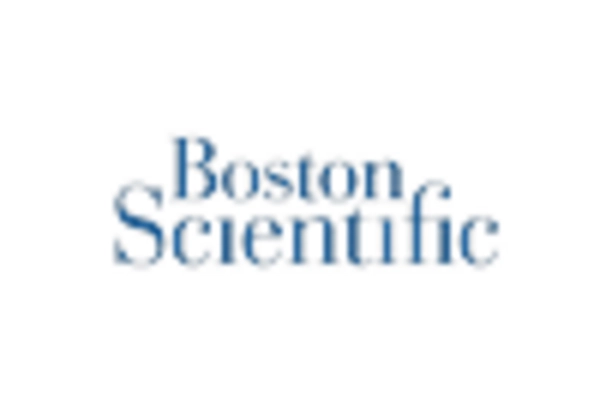
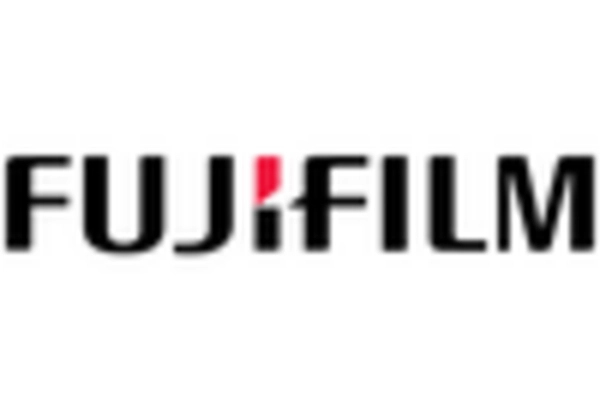
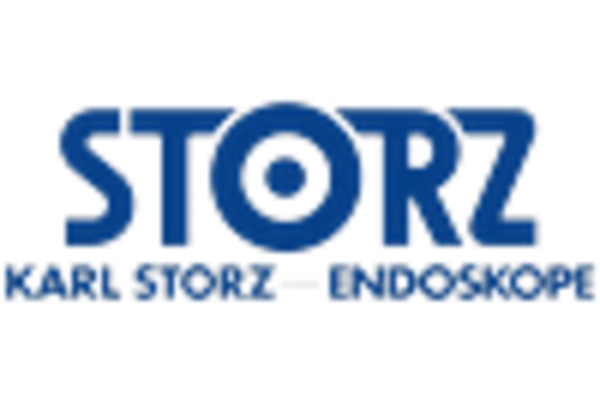
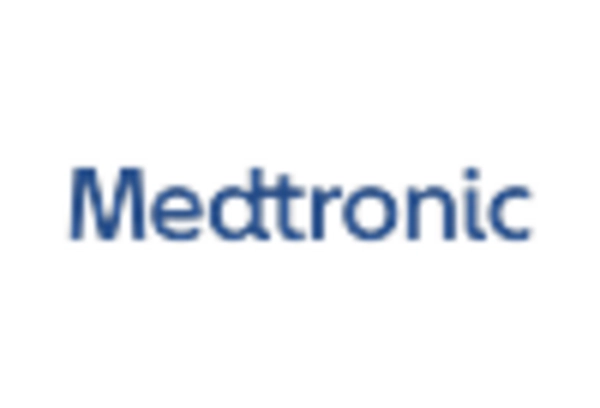
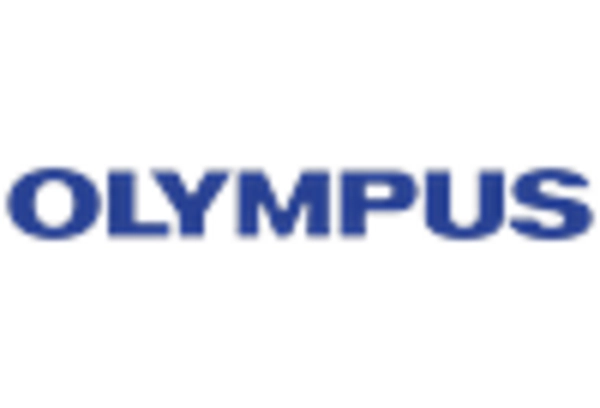
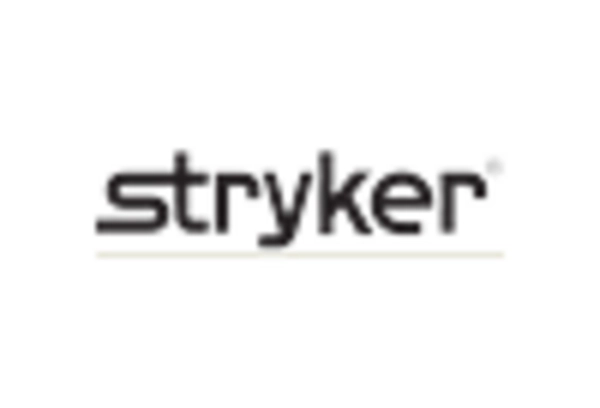









Leave a Comment